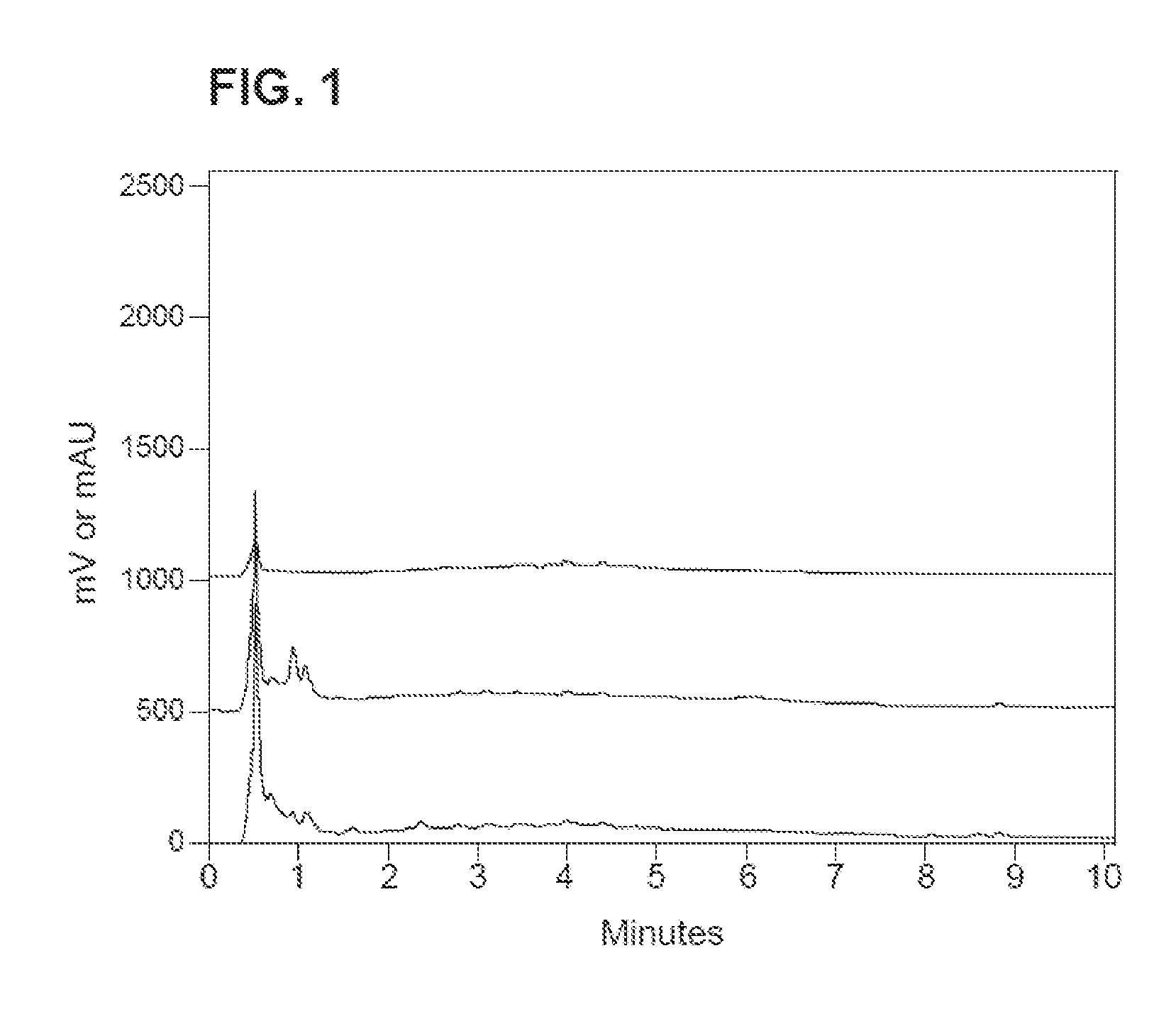Serissa Japonica Extracts and Methods of Use
a technology of serissa japonica and extracts, applied in the field of cosmetic compositions, can solve the problems of reducing skin strength and elasticity, aging skin lacks strength and elasticity, and is therefore fragile, and achieves the effects of increasing collagen and hyaluronic acid proliferation, reducing melanin synthesis, and increasing epidermal thickness
- Summary
- Abstract
- Description
- Claims
- Application Information
AI Technical Summary
Benefits of technology
Problems solved by technology
Method used
Image
Examples
example 1
Preparation of Serrisa japonica Extract
[0142]I. Preparation of Purified Plant Extract
[0143]Extraction Protocol 1
[0144]250 g of dried and powdered material derived from the leaves and stems of Serrisa japonica was percolated with 1000 ml EtOH / H20 (50:50, v / v) at room temperature for 24 hours. This percolation was repeated 2 times and then the EtOH / H20 extraction solution was concentrated under vacuum by rotary evaporator at 40-50° C. to 150 ml or end of distillation, whichever occurs first.
[0145]The concentrated solution was then diluted with pure water to 1500 ml of volume and sonicated for 20 minutes to generate an aqueous suspension. The suspension was left to stand at 4° C. for 12 h and then centrifuged. The supernatant was then transferred to a separation funnel where three separate extraction were done with 500 ml of hexane each. The hexane solvent was recycled, and the hexane extract was discarded.
[0146]Charcoal (10% by w. vs. total dry matter content) was then added to the aq...
example 2
In Vivo Up-Regulation of Skin Biomarkers
[0157]Botanical extracts of Serrisa japonica were tested for the ability to upregulate skin biomarkers in vivo. 20 healthy female Caucasian subjects aged 30-65 with skin type II or III and mild to moderate photo damage were treated with ingredients on the dorsal forearm for 3 weeks (3 consecutive rounds of 5×24 hour patches under semi-occlusion). Test articles and vehicles were applied in a randomized allocation on five sites on each forearm. Each subject was treated with the extract of Serrisa japonica at a concentration of 0.2% formulated in Propylene Glycol / Ethanol / H20 (65:25:10) vehicle and the vehicle control. The application dose was 2 mg / cm2. After treatment, a 2 mm punch biopsy was obtained from each treatment site and fixed in 10% buffered formalin. Tissue samples were then embedded in paraffin, sectioned (5 micrometer thickness), processed and stained for the following skin markers—Total Collagen (by Masson Trichrome), Pro-collagen, ...
example 3
Evaluation of Pigment Inhibiting Activity In Vitro
[0159]B16 mouse melanoma cells (cell line: ATCC, cat. #: CRL-6475) were grown in DMEM in 96-well tissue culture treated dishes. Cells were exposed to diluted test material or vehicle control for 7 days. Following the treatment period, the level of pigment produced was quantified in the medium using a spectrophotometer at 540 nm. Percent inhibition of pigment production by the test active was calculated relative to vehicle control. Serrisa japonica (@ 0.01%) inhibited pigment production in the range of about 21-40% relative to the untreated cell cultures (controls).
PUM
 Login to View More
Login to View More Abstract
Description
Claims
Application Information
 Login to View More
Login to View More - R&D
- Intellectual Property
- Life Sciences
- Materials
- Tech Scout
- Unparalleled Data Quality
- Higher Quality Content
- 60% Fewer Hallucinations
Browse by: Latest US Patents, China's latest patents, Technical Efficacy Thesaurus, Application Domain, Technology Topic, Popular Technical Reports.
© 2025 PatSnap. All rights reserved.Legal|Privacy policy|Modern Slavery Act Transparency Statement|Sitemap|About US| Contact US: help@patsnap.com

